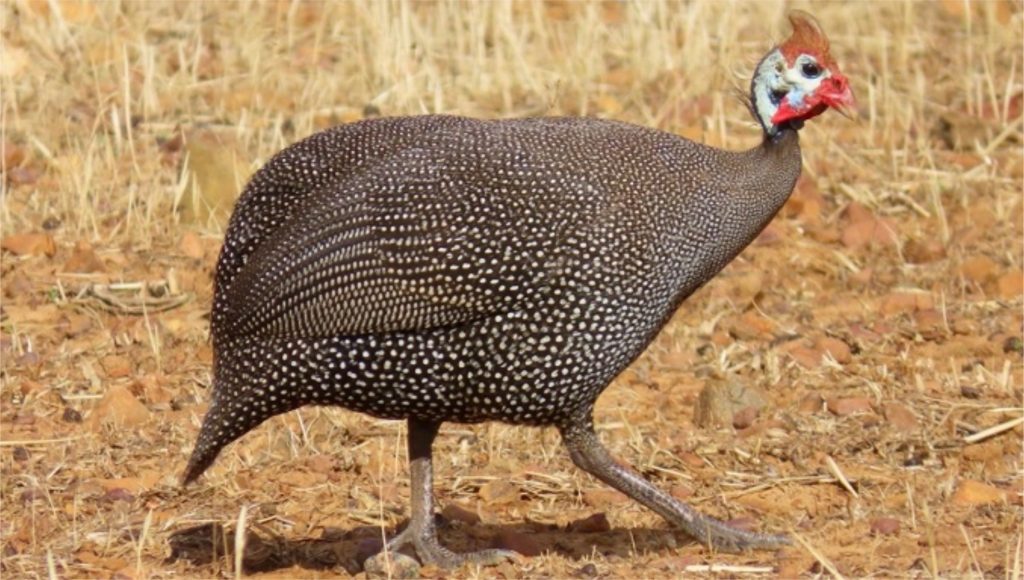introduction
Wingshooting as the name implies is the shooting discipline where gamebirds are shot in flight. Table 1 gives a list of some of the more common gamebirds occurring in Southern Africa. Hunting these birds with shotguns or with archery equipment can be an exciting and challenging pursuit.
|
Size |
Common name |
Suggested gauge (g) and shot size |
Recommended archery point |
|
WATER BIRDS |
|||
|
Large birds |
Spur-wing goose Egyptian goose Pygmy goose |
12g shotgun with a quarter to half choke and on flight lines a half to three quarter choke. Cartridges with 35gm loads of 3, 2, 1 and even AAA can be used |
Small broadhead, small game head, field point in combination with an adder, guillotine. |
|
Medium sized birds |
Duck (8 species) Southern pochard |
A 12g shotgun with quarter to half chokes and No. 5 shot is ideal although 4 and 6 shot can also be used |
Small broadhead, small game head, field point in combination with an adder, guillotine. |
|
Small birds |
Red billed teal Cape teal Cape shoveler |
Number 7 or 7 ½ shot from 28 to 32g is ideal. |
Small game head, field point in combination with an adder, judo point, blunt, Snaro point. |
|
TERRESTRIAL BIRDS |
|||
|
Medium sized birds |
Helmeted guineafowl Crested guineafowl |
A 12g shotgun with quarter to half chokes and No. 5 shot is ideal although 4 and 6 shot can also be used |
Small broadhead, small game head, field point in combination with an adder, guillotine. |
|
Small to medium birds |
Francolin (6 species) Spurfowl (6 species) Pigeons (3 species) Sandgrouse (4 species) |
12g with number 5 shot |
Small game head, field point in combination with an adder, judo point, blunt, Snaro point. |
|
Small birds |
Doves (7 species) Buttonquail (3 species) Quail (3 species) |
Number 7 or 7 ½ shot from 28 to 32g is ideal. |
Field point in combination with an adder, judo point, blunt, Snaro point. |
|
Size |
Common name |
Suggested gauge (g) and shot size |
Recommended archery point |
|
WATER BIRDS |
|||
|
Large birds |
Spur-wing goose Egyptian goose Pygmy goose |
12g shotgun with a quarter to half choke and on flight lines a half to three quarter choke. Cartridges with 35gm loads of 3, 2, 1 and even AAA can be used |
Small broadhead, small game head, field point in combination with an adder, guillotine. |
|
Medium sized birds |
Duck (8 species) Southern pochard |
A 12g shotgun with quarter to half chokes and No. 5 shot is ideal although 4 and 6 shot can also be used |
Small broadhead, small game head, field point in combination with an adder, guillotine. |
|
Small birds |
Red billed teal Cape teal Cape shoveler |
Number 7 or 7 ½ shot from 28 to 32g is ideal. |
Small game head, field point in combination with an adder, judo point, blunt, Snaro point. |
|
TERRESTRIAL BIRDS |
|||
|
Medium sized birds |
Helmeted guineafowl Crested guineafowl |
A 12g shotgun with quarter to half chokes and No. 5 shot is ideal although 4 and 6 shot can also be used |
Small broadhead, small game head, field point in combination with an adder, guillotine. |
|
Small to medium birds |
Francolin (6 species) Spurfowl (6 species) Pigeons (3 species) Sandgrouse (4 species) |
12g with number 5 shot |
Small game head, field point in combination with an adder, judo point, blunt, Snaro point. |
|
Small birds |
Doves (7 species) Buttonquail (3 species) Quail (3 species) |
Number 7 or 7 ½ shot from 28 to 32g is ideal. |
Field point in combination with an adder, judo point, blunt, Snaro point. |
Distribution
As the name implies waterbirds will frequent open bodies of water and the vegetation that surrounds this type of habitat including reed beds, sand banks, marshes and flood plains. The distribution of aquatic species is largely regulated by water availability in which they find their food. The two largest species in this group are the spur-winged goose and the Egyptian goose (Figure 1).
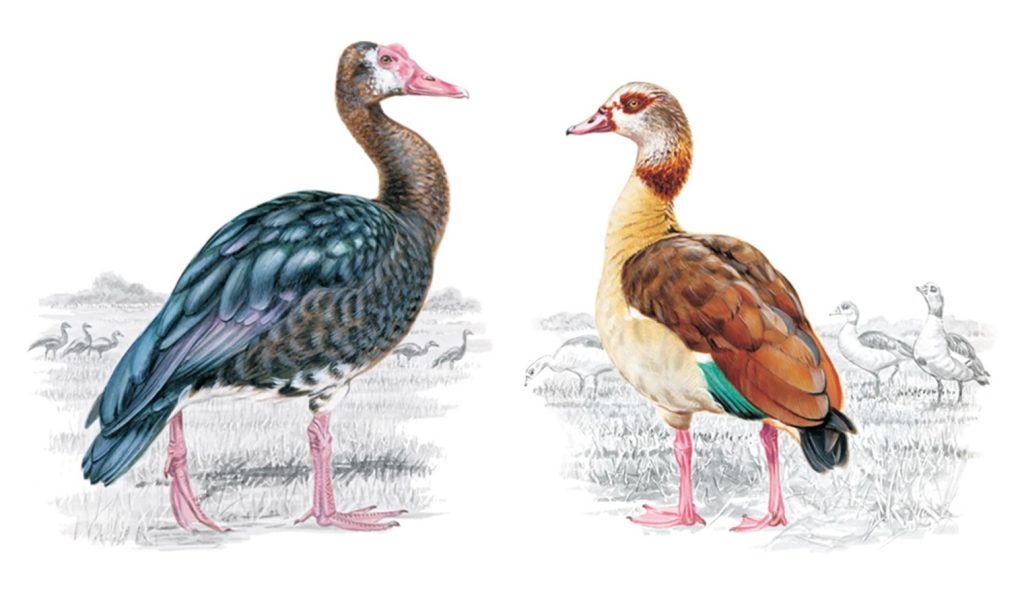
All the waterbirds have webbed feet which show up in their tracks (Figure 2).
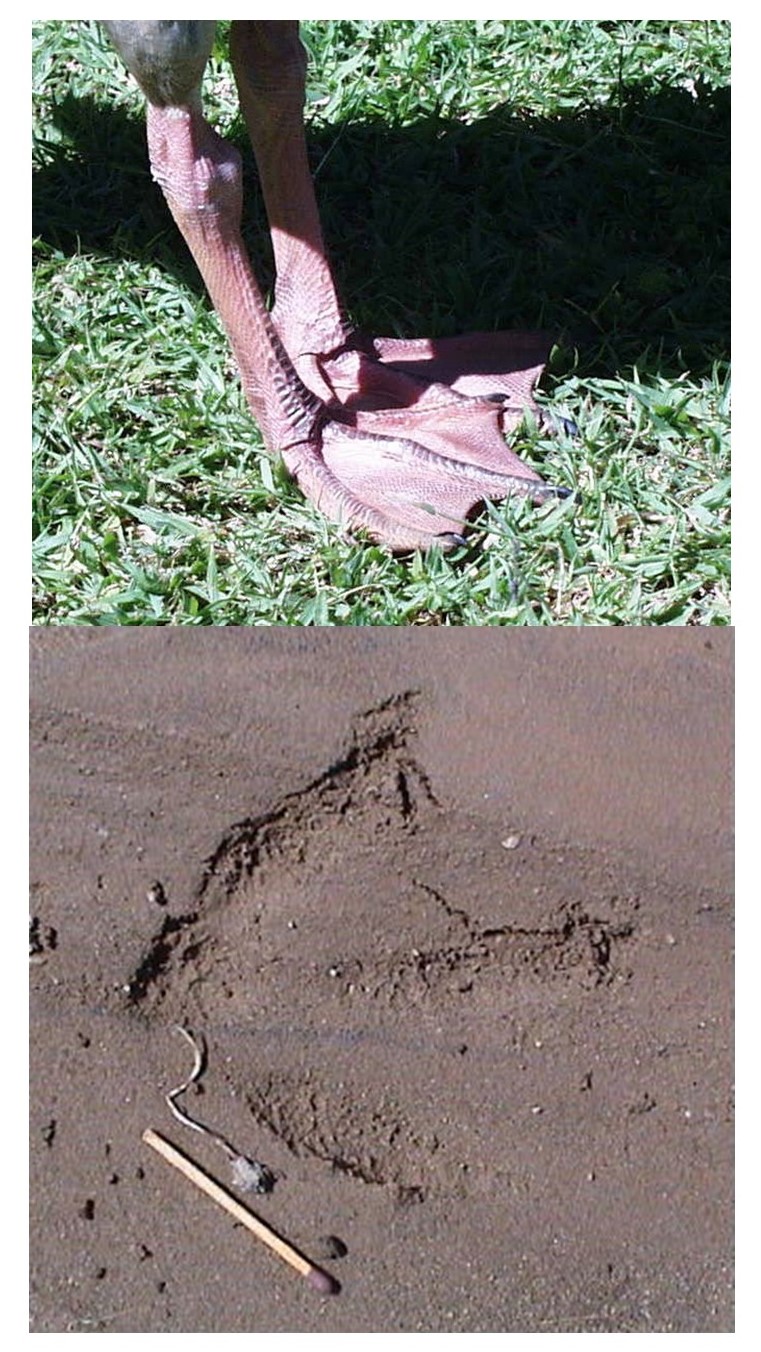
Figure 3 shows some more examples of aquatic gamebirds.
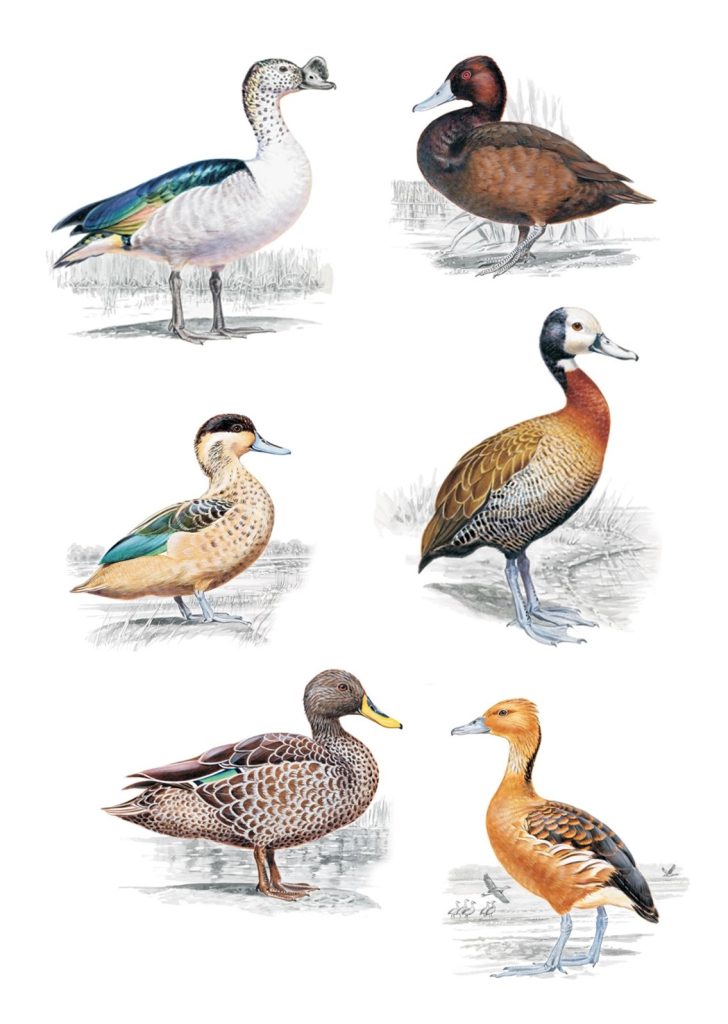
Terrestrial species enjoy a wide range of distribution across a variety of habitat types. Helmeted guineafowl are commonly occurring and are one of the favourite selected by hunters for wing shooting (Figure 4).
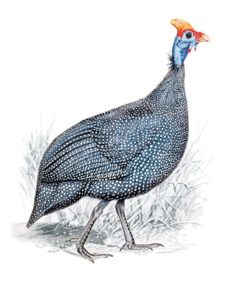
Francolin and spurfowl are also high on the list of wing shooters. Figure 5 shows some more examples of the many terrestrial gamebird species found in South Africa..
Hunting techniques
Hunting waterbirds is not easy. They are generally very vigilant and difficult to sneak up on. Proper camouflage is imperative. Ideally, shots should be taken whilst the birds are flying overland as this simplifies retrieval. This is however, not always possible and shots might have to be attempted whilst the birds are over water. Recovering downed birds which have fallen into water can make things a little difficult without the use of a good retriever dog or a small boat. It can present some hazards if the hunter must wade in to retrieve dead birds.
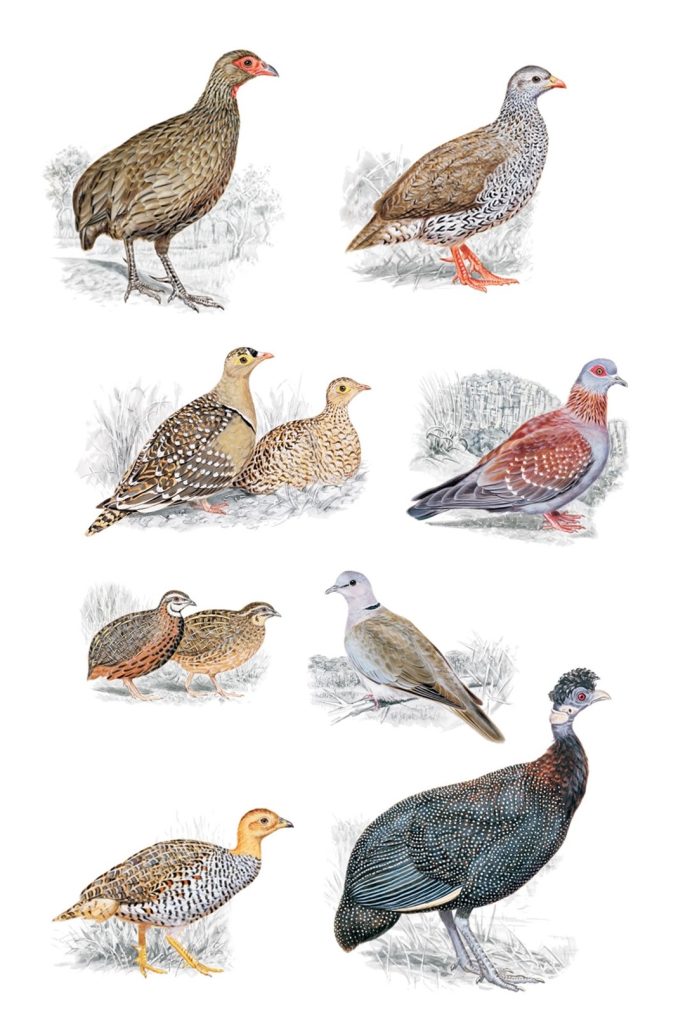
Be careful of wading into deep water whilst wearing waders. If the water is too deep, water can pour into the waders and drowning could be the unfortunate result. Making use of a baiting station or shooting from a blind using decoys (Figure 6) to lure birds to within shooting range a hunting option.
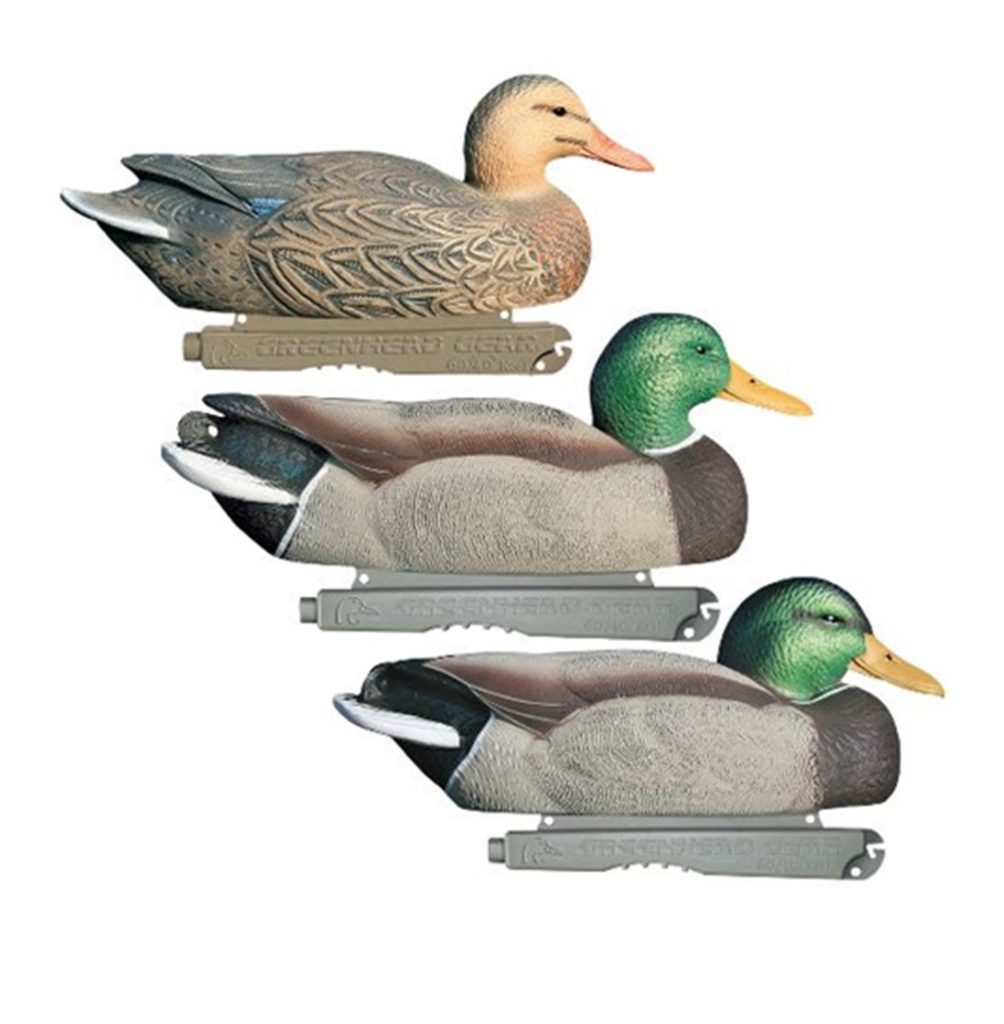
Another is to shoot from a floating platform or boat and a third alternative is to stalk along the banks of reed beds actively looking for birds in shallow water or on the banks and taking a shot when the birds are flushed. Duck and geese sometimes frequent maize and grain fields to feed. This type of feeding behaviour is rather difficult for the hunter to predict and to get a shot under these circumstances would be opportunistic.
Hunting terrestrial species is accomplished by positioning oneself in suitable habitat where gamebirds fly over or come in to land such as at waterholes, feeding stations or agricultural lands. Another technique frequently used is to walk in areas where gamebirds are likely to be found and to flush them out – often using beaters or trained dogs for this purpose and shooting as the birds take flight. Always make sure this is done in an area where there are no people close by so that if you miss the bird in flight your arrow or shot will not pose a danger to others.
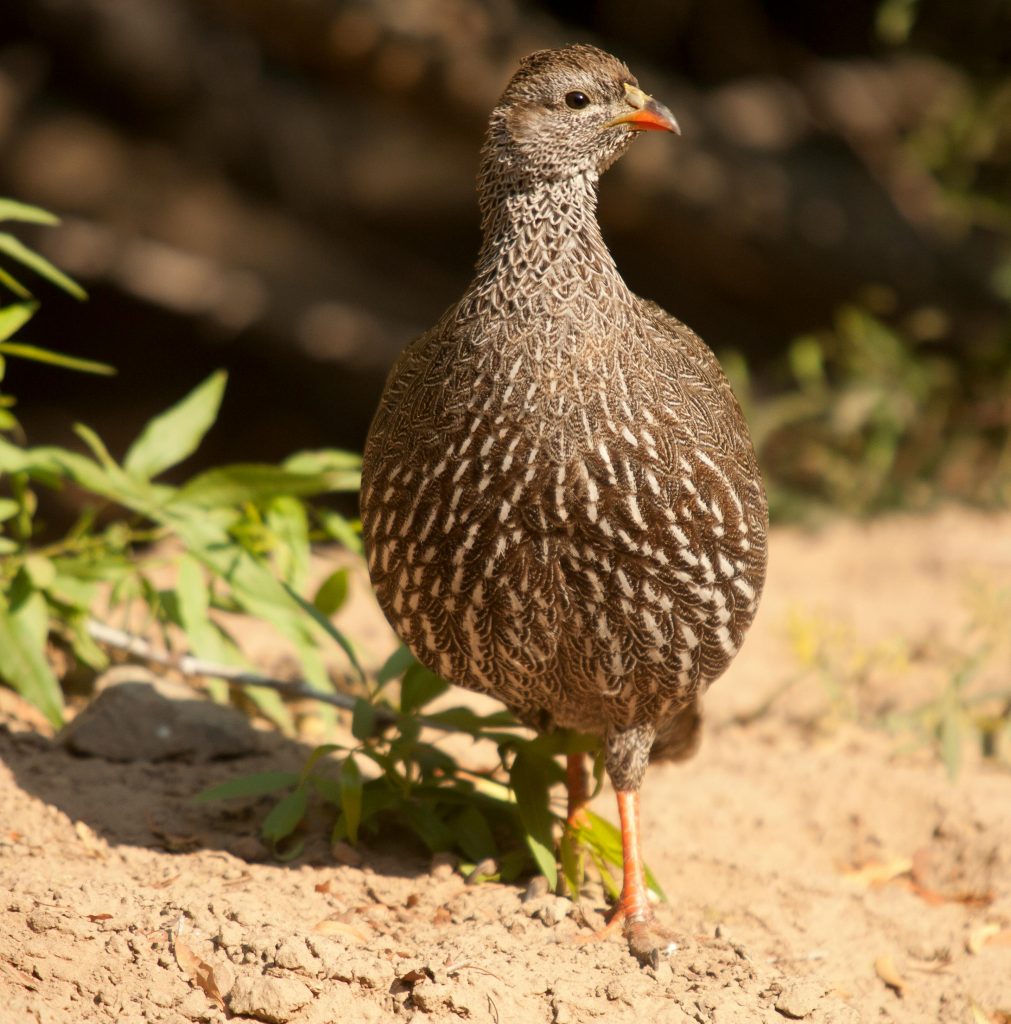
Hunting equipment for wingshooting
Shotguns
Shotguns are available as single-barrel break actions, double-barrelled break action (side by side or over and under), single-barrel pump actions, and single-barrel autos (see Figure 7).
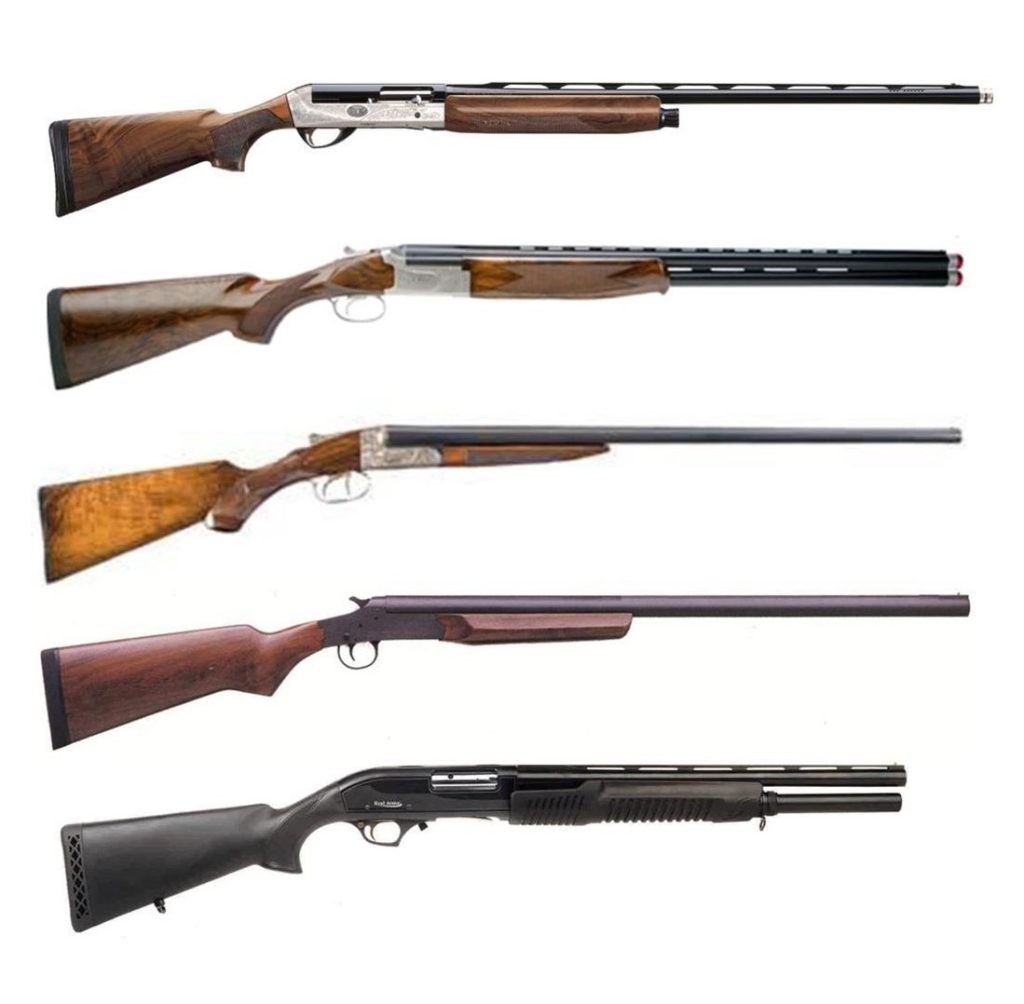
Shotgun choke and spread pattern
When a shotshell is fired from a shotgun, the pellets leave the barrel and begin to spread or scatter. The farther the pellets travel, the greater the spread of the shot. Shotgun barrels have a choke to control the spread of the shot pattern (Figure 8).
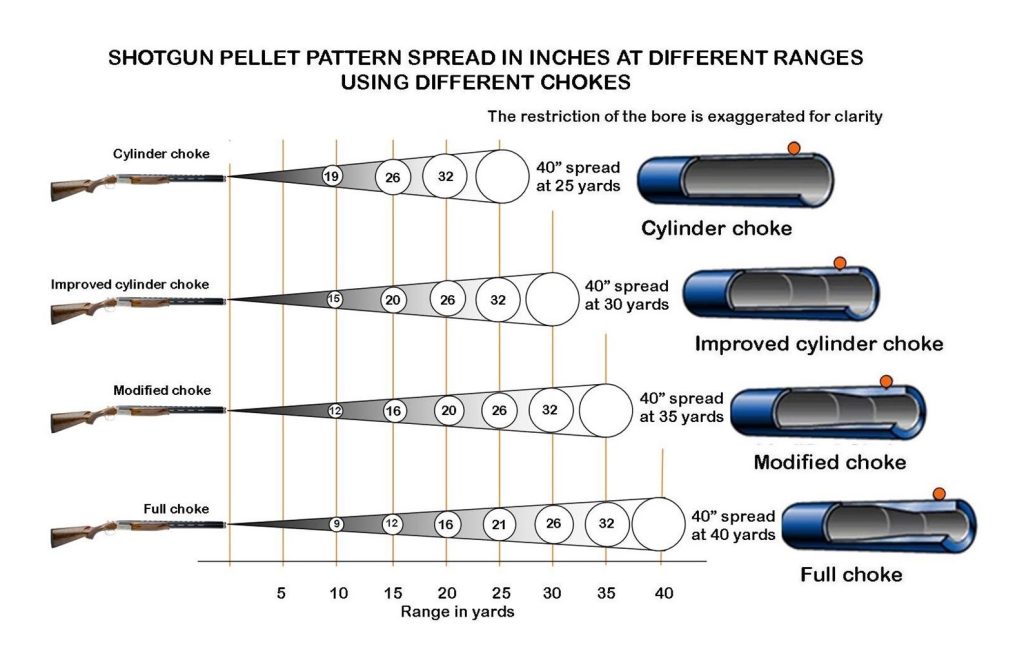
The distance from the target determines the choke needed. The choke does not alter the shotgun’s power—it just controls how tight or spread out the shot pattern will be at a specific distance.
Archery equipment
Using fluflus is advisable on arrow shafts as it will result in fewer lost arrows. Flu-flu’s are large feathers that create a lot of drag, which quickly slows up an arrow so that it does not fly too far, which can make finding shot arrows very difficult and also pose a safety hazard (Figure 9).
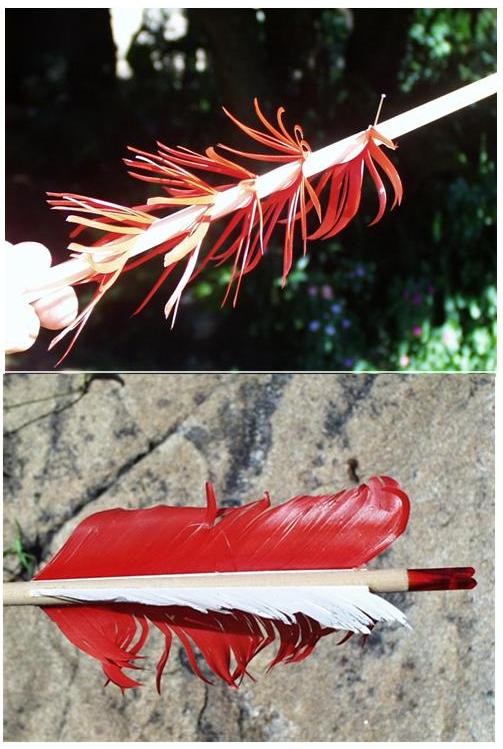
There are a number of options for arrow points for hunting gamebirds. See Table 1 and Figure 10.
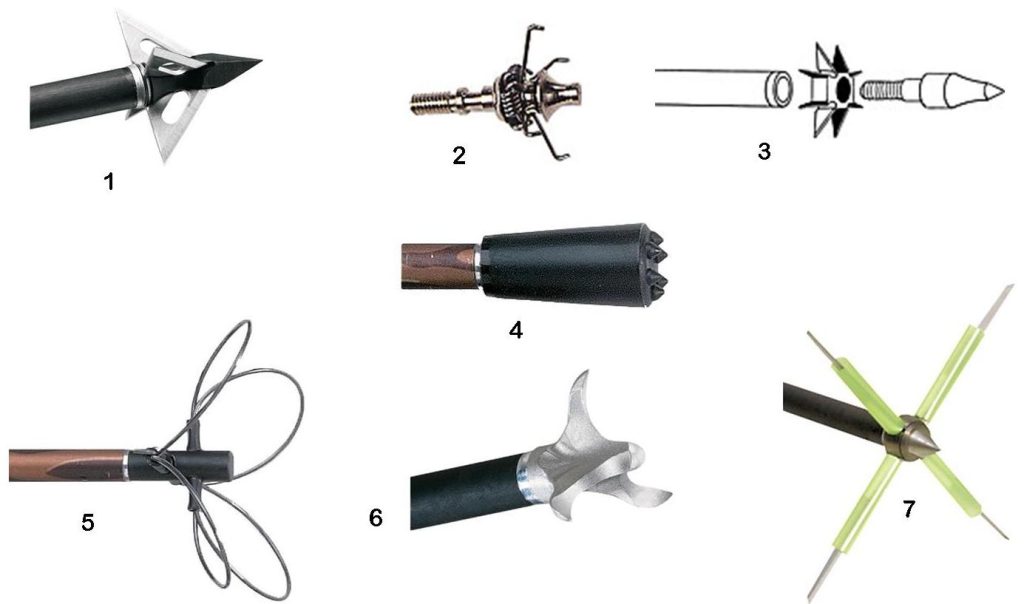
A small broadhead will work as well as a field point in combination with an “adder” behind the field point for larger species. Snaro or Judo points can be used on smaller species but are not advisable on larger birds such as Egyptian or spurwing geese. When aerial shots are attempted, which requires a more instinctive type of shooting technique, a longbow or recurve is better suited to this type of shooting but compound bows are also used with success.
Shot placement
When shooting at moving birds in flight – especially with arrows that have a relatively slow velocity – the hunter will have to learn to “lead” – that is aiming in front of the bird giving the arrow time to reach the target so that the bird flies into the arrow. Aiming directly at the bird will most likely result in the arrow passing behind the target. This problem is largely offset by the spread pattern of shotgun pellets.

